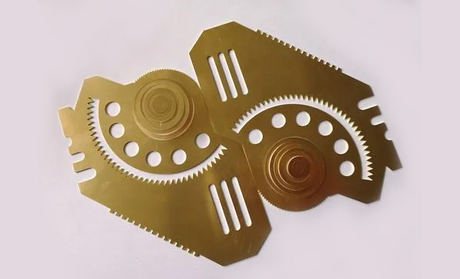1. Laser cleaning, as an emerging cleaning technology, has the following advantages over traditional cleaning methods (e.g. mechanical cleaning, chemical cleaning):
● High cleaning efficiency
Laser cleaning technology can quickly remove surface contaminants, and the cleaning speed is much faster than traditional mechanical or chemical methods. The laser system can work continuously, reducing downtime and improving work efficiency.
● Accuracy and selectivity
Laser cleaning can accurately treat specific contaminants and has high selectivity for materials. Lasers can adjust frequency and energy according to the characteristics of different materials to avoid damage to the substrate, especially when dealing with complex shapes or sensitive parts.
● No chemical agents required
Unlike chemical cleaning methods, laser cleaning does not require the use of any chemical agents, thus avoiding the pollution of chemical residues to the environment and cleaning equipment. This is particularly important in some applications that require high cleanliness (such as cleaning of electronic products).
● Environmental protection and sustainability
Laser cleaning produces very little waste, mainly the removed contaminants, and does not cause secondary pollution. This environmental protection feature meets the sustainable development requirements of modern industrial development and reduces the negative impact on the environment.
● Reduce operational risks
During laser cleaning operations, almost no harmful gases and liquids are produced, and the operator's working environment is safer. Laser cleaning is usually carried out under closed or controlled conditions, which can effectively reduce the release of volatile organic compounds (VOCs) and other toxic substances.
● Low maintenance cost
Although the initial investment is relatively high, the maintenance cost of the laser cleaning system is low, and due to its high cleaning efficiency and low consumables, long-term use can significantly reduce the overall operating costs.
2. Positive impact on the environment and work safety
● Reduce environmental pollution
Laser cleaning does not involve chemicals and generates less waste, which fundamentally reduces pollution to the environment and meets the current requirements for green and sustainable development.
● Low emissions
Since the laser cleaning process releases almost no harmful gases and liquids, it can effectively reduce air pollution in factories or workplaces and protect the health of employees.
● Improve work safety
Laser cleaning reduces the use of chemicals, thereby reducing potential chemical reactions and accident risks, making the working environment safer. At the same time, due to the automation of laser cleaning, manual intervention can be reduced and the probability of human operating errors can be reduced.
● Long-term ecological benefits
With the popularization and application of laser cleaning technology, the overall industrial demand for chemicals will decrease, which will help reduce the pressure of chemical waste treatment and management, thereby further protecting the ecological environment and biodiversity.
In summary, while improving cleaning efficiency, laser cleaning has also made positive contributions to environmental protection and work safety, demonstrating its important value in modern industry. Click here to contact Suntop Laser now for more information.
































